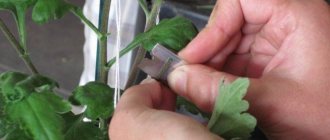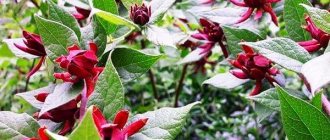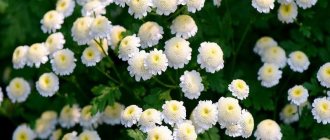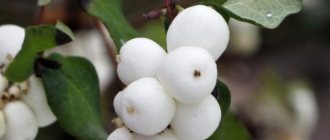Chrysanthemums, blooming their magnificent buds from late summer until frost, become the main decoration of the autumn garden. Unfortunately, not all varieties can be successfully grown in open ground in the capricious climate of central Russia. Chrysanthemum Saba is a greenhouse plant, but with proper care, especially when the summer is long and the autumn is warm, it can bloom profusely and for a long time not only in the apartment, but also on the street.
Chrysanthemum Saba
A chrysanthemum variety with the unusual name Saba is a bush chrysanthemum.
The foliage of the Saba chrysaneth is dense, carved, with deep longitudinal grooves. Bush chrysanthemum "Saba" is a very beautiful variety of flowers that has dense foliage and deep longitudinal grooves. The diameter of the flower reaches 5 cm, and the height of the bush is 70 cm.
As a garden flower, the chrysanthemum has been known for 3000 years, but interest in it is still growing.
Possessing the same qualities as ordinary varieties of their species, Saba chrysanthemums are one of the best options for making various floral arrangements, since they are resistant to transportation and will last a long time in a vase.
Chrysanthemum optimist. By what characteristics are chrysanthemums distinguished?
The perennial garden bush chrysanthemum, a photo of which you can see in this article, is a wonderful plant. It requires special planting and proper care.
First of all, it is worth finding out what signs will help identify this disorder. There are many signs: the size of the inflorescences, their shape, the height and size of the plant itself. At the moment, humanity is given knowledge of a huge number of flower varieties, united by the following features and characteristics.
The first thing that catches your eye is the size of the inflorescence. It's simple. Biologists distinguish only three groups here:
- Small-flowered, which are divided into simple and double;
- Medium flowered;
- Large-flowered.
Let's look at each of them in detail.
On one bush, the height of which can reach as much as 120 cm, small-flowered plants (otherwise known as Korean plants) grow quite a large number of inflorescences with flower diameters from 2 to 10 cm. The leaves are very much reminiscent of oak leaves. Flowers tolerate frost well, are not capricious about the composition of the soil and, best of all, are easy to care for. The plant begins to bloom in early autumn and pleases its owners until the first frost.
The second group is most suitable for decorating both a personal plot or a large garden, as well as balconies or terraces. Such flowers also grow well at home, reaching a height of 30 to 70 cm and having a flower diameter of 10 to 18 cm.
And finally, we come to the last group of large-flowered plants. These are very impressive plants. The height is the same as that of the first group - ranging from 80 to 120 cm. The plants have quite large flowers. Their diameter is at least 10 cm, reaching its maximum value - 25 cm. Unfortunately, such chrysanthemums do not tolerate frost well. Some of its varieties have the ability to winter in open ground. Large-flowered chrysanthemums are used mainly for bouquets.
Caring for chrysanthemum Saba
In open ground, chrysanthemum blooms in August and delights with its lush flowers all autumn, and can withstand frosts down to -7 °C. Depending on the variety, the stems reach a height of 30-80 cm and are decorated with double, semi-double and simple inflorescences of unusually varied shades.
In the northern regions of Russia it is believed that it is impossible to grow chrysanthemums in open ground, but in fact they can successfully winter with light shelter in central Russia and even in Siberia! In these areas, after cutting the stems, hemp 10-15 cm high is well covered with peat, covered with leaves and insulated with spruce branches.
Planting chrysanthemums
Chrysanthemums do not like the slightest shading and moisture retention, so the place for them should be sunny and at least slightly elevated. This is a guarantee that the shoots will not stretch or change the time and period of flowering. However, the root system of chrysanthemums is superficial, so the soil should not be too dry.
The ideal soil for them is loose, moisture-permeable, with the optimal amount of various nutrients. If the soil in the garden is dense and infertile, before planting the cuttings, add a little peat, compost or rotted manure to the soil, but do not overuse them, otherwise the plants will become overly tall to the detriment of flowering. Add a small amount of coarse sand to the soil for drainage. The soil mixture is preferably neutral or slightly acidic.
The ideal day for planting is cloudy or rainy. In hot, sunny weather, plant cuttings in the early morning or late evening when the sun is less active. Pour plenty of water into holes 35-40 cm deep, add drainage and soil mixed with vermicompost in a ratio of 20:1. The chrysanthemum is placed and covered with earth. The roots grow parallel to the soil, so they are not buried too deep. Tall varieties require additional support.
Immediately after planting in the ground, the first pinching is carried out - the growing point on the plant is removed. 3 weeks after planting, the upper part of the shoot with 2-3 nodes is broken off - the second pinching. The first days after planting, artificially shade the seedlings so that they do not suffer from bright sunlight. The best option is non-woven material, but it is advisable that it does not come into contact with the leaves.
Propagation of chrysanthemums by cuttings
The watering regime should be moderate, in which the root system will not rot from excess moisture. This is despite the fact that chrysanthemum is quite moisture-loving. The exception is the dry period (during this, water more abundantly so that the stems do not become woody and the flowers do not lose their decorative appearance) and the period before flowering. It is better to take settled or rainwater.
Once a week, “feed” the flowers with mullein infusion (1:10), and before budding, with potassium and phosphorus fertilizers for lush flowering, sometimes with nitrogen fertilizers for increasing green mass. Stop feeding before flowering begins. When fertilizing, make sure that the fertilizer solution does not get on the leaves and cause a burn. Water only at the roots.
For the development of young chrysanthemums, it is extremely important to provide a balanced diet in the first two months, since there is a very active growth of green mass. Burnt mullein and chicken droppings are very effective. The main rule is that it is better not to feed the plant rather than to burn it.
Pour a couple of buckets of mullein or a bucket of chicken manure into a large container, add water, stir and let it sit for three days - during this time the valuable highly concentrated fertilizer will be ready. Prepare a solution: add 10 liters of water to 1 liter of concentrated infusion. Apply 1 liter of solution to each plant only at the root and always on moist soil.
Further care of the chrysanthemum does not require much effort - regular watering, loosening, weeding, spraying against parasites.
Given that chrysanthemums tolerate cold quite well, at the end of October protect the flower bed from frost by placing a frame with plastic film on it - and you will admire the flowering of April cuttings for another month. You will remove the frame at the end of November, transplant the bushes into pots, and on the warm, bright veranda they will bloom even in January.
If you were recently given a chrysanthemum in a pot, how to preserve it until spring and plant it in the garden, you can find out from the answer to the question “How to preserve chrysanthemums until spring?” And the article The second life of a chrysanthemum from a bouquet is confirmation that a flower you like can be propagated by cuttings, even if you do not know the exact date of cutting.
Chrysanthemum propagation
Since varietal characteristics are not preserved when propagated by seeds, chrysanthemums are propagated by cuttings, dividing bushes, or root shoots, which are separated from the mother bush.
In any case, chrysanthemums should be planted and replanted in the spring, in May, when frosts and cold snaps have passed. It is also permissible at the beginning of summer - this will not affect the development of chrysanthemums.
Caring for chrysanthemums
Watering should be moderate so that the root system does not rot, although this is a moisture-loving plant. Water that is most suitable is settled or rainwater.
Once a week you can pamper chrysanthemums with mullein infusion or phosphorus fertilizers for lush flowering. You can only water the roots with fertilizers; if the solution gets on the leaves, it will burn them. In the first 2 months of life, the plant needs balanced active feeding, because... During this period, green mass is growing. Chicken manure infused in water for about 3 days is best.
If you want your chrysanthemums to bloom a couple of weeks earlier in the spring, then there is one secret that will help you boast of their flowering already in May. To do this, dig up the bushes and lower them into a bucket for 2 - 3 minutes. with a pre-prepared solution of potassium permanganate. If it is not possible to dig up a bush, then you can water the ground around it with this warm solution.
Further care of the plant is not so difficult. Weeding, regular watering, loosening are the key to beautiful flowering.
Before the arrival of winter, around the end of October, it is best to hide the chrysanthemum under a frame made of plastic film. The plant will bloom under it for about another month, and at the end of November you can remove the frame, transplant the flowers into pots and enjoy their bloom on the warm veranda for the whole of January.
If we talk about diseases, then timely and frequent watering will protect the plant from aphids, leaf rollers and mites, which cannot tolerate moisture. It would be a good idea to treat flowers with parasite repellents after each rain. Apart from other pests, caterpillars pose the greatest danger to chrysanthemums. One caterpillar can destroy several buds at once. It is better to purchase drugs to combat these insects in advance at the garden store. Fitoverm, Ratibor, Iskra and Aktara have proven themselves well. The main thing is to inspect the flower as often as possible and apply these remedies in a timely manner.
Growing rules
- Moderate watering. The root system must not be allowed to rot. It is better to water with rain or settled melt water.
- Fertilizer. Several times a month you need to pamper the plant with phosphorus fertilizers so that the flower blooms fully. For this purpose, infused mullein is used. It is important to know that the mixture with fertilizers should not get on the leaves - this will lead to burns. Fertilizers must be applied only to the root area.
In the initial period of growth, the seedling needs active, balanced feeding, because the first two months are an important period of growth with the growth of greenery. At this time, a suitable fertilizer is chicken manure. It is diluted in water and infused for 3-4 days. In order for the chrysanthemum to bloom two weeks earlier than expected, you can carry out a stimulating procedure: dig up a bush and dip it in a solution of water with potassium permanganate for 3 minutes.
- Weeding and loosening the soil. The bush will thank you for these regular actions with beautiful flowering. Loosening should be shallow so as not to damage the roots. During surface loosening, the soil is saturated with oxygen and supplies the roots. They will not rot and will not rot.
Before frosts at the end of autumn, gardeners hide the chrysanthemum under plastic film or a special frame. A covered bush will keep flowers for several more weeks. When frost sets in, the frame is removed and the bush is transplanted into a spacious pot. If the root is powerful, plant it in a bucket. They are brought into the house or onto an insulated veranda. Chrysanthemum in suitable conditions continues to bloom until February.
Planting chrysanthemums
Chrysanthemums should be replanted in the spring, in May, when the cold weather passes. If you did not have time to replant the bush in the spring, then you need to do this before September 15 so that the plant has time to take root before the onset of frost. Until this time, store the flower in a shallow, wide pot, cutting it low. As soon as the opportunity arises, transplant the seedlings into the ground. A cloudy or rainy day is best for this.
You need to choose a place for planting that is sunny and slightly elevated. Chrysanthemum grows very well in loose soils rich in organic matter.
If your garden only has infertile and dense soil, you need to deal with it. Try adding rotted manure, compost or peat to the soil. Coarse sand is best for improving drainage. But you shouldn’t get carried away with fertilizers either, otherwise the plant will turn green abundantly, but will not flower.
It is not recommended to plant a bush at the end of autumn; this will lead to the death of the flower; it most likely will not survive the winter.
The distance between planted cuttings should be approximately 30 - 50 cm, depending on the variety. When planting, we do not shake off the soil from the roots.
To quickly form a powerful root system, you can immediately water the transplanted bush with the Kornevin solution.
It is important to remember that chrysanthemum should not grow in one place for more than 3 years. Transplantation occurs by dividing the bush. This way you can preserve a large bud and abundant flowering.
Chrysanthemum in your garden is a symbol of longevity and prosperity.
When and how to plant garden flowers?
There are several ways to propagate flowers:
- seeds;
- cuttings;
- dividing the bush.
Cuttings
Add a little sand, humus and peat to the prepared hole and mix everything with the soil. After moistening the holes, immerse the cutting, cover it with earth and place it in a dark, cool place .
Next, you only need to periodically water the workpiece, and in the spring the sprouted plant can be planted in open soil.
Seeds
Chrysanthemums are planted with seeds at the end of February or March - mid-April , depending on the flowering period. Gardeners recommend using boxes filled with soil for sowing.
To nourish and stimulate rapid entry, you need to mix the soil with a small amount of fertilizer and sand. Seeds can be planted directly on the surface of the soil without powder . After moistening the planting with water diluted with potassium permanganate (to a light pink tint), the box is covered with glass (film) and placed in a lighted place.
If the air temperature is below 10 degrees, the workpieces should be stored indoors. Seedlings that have reached more than 5 cm are transplanted into open ground. The seed propagation method is more suitable for plants with small inflorescences .
Characteristics of bush chrysanthemum
Chrysanthemum bush belongs to the Aster family, or Asteraceae. The height of the plant can vary from 30 cm to 1.5 m. The range of colors and shades of the plant is very wide. Tubular flowers are yellow in color, while reed flowers are typically white, yellow or pink. There are even green flowers! Bush chrysanthemums fully develop when grown in one area for no more than five years. Then the plant loses its decorative qualities.
Chrysanthemums: care and propagation (video)
Chrysanthemum Baltica
One of the most popular varieties, which looks great when cut and is widely used in landscape design.
| Variety name | Main characteristics |
| "Baltica white" | Snow-white bush chrysanthemum. Stem height - 65-70 cm. Suitable for cutting. Unpretentious. |
| "Baltica yellow" | Lemon yellow spray chrysanthemum. The largest. Stem height - 60-65 cm. Very popular. |
| "Baltica Pink" | The combination of mint and pink tones creates a spectacular floral arrangement. Stem height is 80-85 cm. |
| "Baltica Lime" | The unique green color and large-flowered variety make this bush chrysanthemum a favorite in any flower arrangement. |
Optimist, or Optimist
The new anemone-shaped chrysanthemum Optimist attracts the attention of gardeners with its unusual flower structure and high decorative value.
| Variety name | Main characteristics |
| "Optimist White" | Large flowers with delicate pink-lilac petals and a green central part. They look very impressive in flower beds and as cut flowers. |
| Optimist Pink | Belongs to small-flowered varieties. It has large anemone-shaped flowers with white petals and a greenish core. |
Saba, or Saba
The chrysanthemum variety with this unusual name belongs to the category of bush flowering plants with dense carved leaves with deep longitudinal grooves. Saba is considered one of the most striking representatives of bush chrysanthemums due to its white and burgundy flowers, which have incredibly beautiful tubular petals. This is a mid-late flowering variety. The height of the bush is 110 cm, and the diameter of the flower is about 10 cm.
Mona Lisa, or Mona Lisa
Chrysanthemums of this variety look great both on their own in flower beds and in flower arrangements.
Green bush chrysanthemums
Spray green chrysanthemums add originality to the design of a flower garden and greatly refresh any flower arrangement. To date, several such varieties have been developed.
| Main characteristics | |
| "Mona Lisa pink" | Chrysanthemum of medium late flowering period. The height of the bush reaches 170 cm. The flowers are lilac-pink, with a green center. Flower diameter is about 7 cm. |
| "Mona Lisa white" | Mid-late flowering period. The height of the bush reaches 170 cm. The flowers are white, with a green center, with a diameter of 6 to 8 cm. |
| Mona Lisa cream | Mid-late flowering period. The height of the bush reaches 170 cm. The flowers are lemon-colored, with a green center, with a diameter of 6 to 8 cm. Wide petals almost completely cover the center. |
| Variety name | Main characteristics |
| Santini Palm Green | New variety. Bright green chrysanthemum with pompom inflorescences. |
| "Galiaro Green" | Green needle-shaped bush chrysanthemum. The flower has a high decorative value due to its unusual shade. |
| "Green Lizard" | Mid-late flowering chrysanthemum. The height of the bush reaches 130 cm. The flowers are 6-7 cm in diameter. Excellent for cutting. |
| "Feeling Green" | Light green bush chrysanthemum with a spherical bud shape. |
| "Yoko Ono" | Named after the Japanese artist, the chrysanthemum has lush green pom-pom flowers with a diameter of 3 cm. It blooms in early November. |
| "Froggy" | The plant has small spherical green flowers. Blooms in October. |
Flower notes
Cat about flowers. Chrysanthemum
Of course, one note is not enough to tell about all the varieties of beautiful chrysanthemum. We will get acquainted only with the most popular ones, which are most often used in making bouquets with the addition of chrysanthemums in Rostov-on-Don .
We will choose only one characteristic for classification: bush varieties or single (single-headed). What does this mean? Bush chrysanthemum is a branch with several stems, on which there are 5-7 flowers. The flowers are not large, 3-5 cm in diameter, depending on the variety. One branch of bush chrysanthemum already looks like a bouquet.
Single-headed chrysanthemums are the classic flower, with one stem and one large flower on it. The size of a single chrysanthemum flower can reach 20 centimeters in diameter! But we'll talk about them next time.
And today we will get acquainted with the varieties of bush chrysanthemums, as they are most often used for bouquets.
Mona Lisa
This is a bush daisy chrysanthemum. It looks very beautiful in bouquets, and can also be used as a substitute for daisies in the off-season. The yellow center is surrounded by snow-white petals, why not a field chamomile? A few twigs and a bouquet of daisies are ready.
Chamomile chrysanthemum comes in different colors: yellow, red, but, for example, pink is called
Grand Pink
The flowers also resemble chamomile in shape, but have a color that is not typical for chamomile - soft pink, with a purple tint.
A bouquet of chrysanthemums from flowers of this variety looks very beautiful; we collect it with the addition of gypsophila and Dutch greens, decorate it in green felt and the result is something beautiful.
Here is an example of using chrysanthemums of this variety in a mixed bouquet - an inexpensive and beautiful bouquet is obtained from a combination of three flowers, and our chrysanthemums add contrast and brightness to the bouquet.
Zembla
A bush chrysanthemum, which, unlike the chamomile variety, does not have a pronounced center. The petals are fluffier. This variety can also come in different colors.
The most interesting, in our opinion, is a representative of bush chrysanthemums. It has a rosemary shape, petals of two colors. It can be red pink or purple with white edging of the petals. This chrysanthemum looks great in mixed bouquets.
Feeling
The most unusual chrysanthemum. People call it a “button”. Can be green, yellow and white. She doesn't even look much like a flower. On its own it doesn’t look very presentable, but in prefabricated bouquets it looks chic and gives them uniqueness and originality.
We got acquainted with the most popular varieties of bush chrysanthemums, and in a week I will tell you about another flower, and let it be a surprise about which one.
vote
Article rating
Landing rules
Chrysanthemum bush is a very light-loving plant. It is recommended to plant bushes in the southern areas of flower beds and flower beds. For preventive purposes, chrysanthemum bushes should be sprayed with a phosphamide solution before planting, as well as before autumn digging.
Bush chrysanthemums prefer nutritious and loose soil. Insufficiently fertile soil must be fertilized. For this purpose, you can use rotted manure or peat. An excess of nutrients inhibits the formation of buds and flowering. The soil should be neutral or slightly acidic.
It is advisable to plant chrysanthemums on a cloudy day. After planting, abundant watering is carried out, and, if necessary, plants are shaded. Immediately after planting the bushes in the soil, it is necessary to pinch the plants (i.e., shorten the stems). 20 days after planting, the bushes are pinched again, breaking out the upper part of the stems along with a couple of nodes.
Diseases and pests
Flowers often suffer from fungal diseases. They develop due to excess moisture in the soil, high nitrogen content, and poor air circulation. The most common diseases are rust and septoria.
When affected by rust, pale areas and orange spots appear on the surface of the leaves. This leads to weakening of the bush and deterioration of flowering. In this case, you need to remove the damaged leaves. When the disease spreads significantly, plants are treated with fungicides. To avoid recurrence of rust, do not allow water to get on the leaves during watering.
With septoria, yellow spots form on the leaves, which gradually increase in size and acquire a brown and then black tint. Fungicides are used for treatment. Damaged areas must be removed.
Another disease is powdery mildew, which is characterized by the appearance of a gray coating on the leaves. To get rid of it, they are treated with fungicidal preparations.
Common pests include leaf nematodes, spider mites and aphids. You can remove them using insecticidal preparations or a copper-soap solution. It is also necessary to remove damaged parts of the plant.
Features of care
Caring for bush chrysanthemums is standard and includes regular loosening of the soil, watering, and systematic application of mineral and organic fertilizers.
At the beginning of the growing season, it is necessary to fertilize the chrysanthemum with complex fertilizers, and also apply potash fertilizers a couple of times during the season. You can also activate the growth of bushes with nitrogen fertilizers, and phosphorus and potassium fertilizers are effective during the budding phase.
When forming a bush in the spring, green shoots that are too long must be shortened, which allows you to get attractive, abundantly flowering plants.
Watering is carried out as the soil dries, but you should not overdry or over-moisten the soil. After watering, the soil is loosened and weeds are removed from the flower garden or flower bed.
Combination with other plants
Bush chrysanthemum is widely used in landscaping and landscape design. Autumn flowering plants go well with fruit trees and ornamental shrubs. Very often, chrysanthemums are planted against the backdrop of tall perennials, such as rudbeckia, dahlias, purple coneflower, bush and English asters, and Volzhanka. Chrysanthemum also goes well in mixed plantings with ornamental cabbage. It also looks very good as a tapeworm on the lawn.
Bush chrysanthemum Saba: varieties, planting and care
Chrysanthemums, blooming their magnificent buds from late summer until frost, become the main decoration of the autumn garden. Unfortunately, not all varieties can be successfully grown in open ground in the capricious climate of central Russia. Chrysanthemum Saba is a greenhouse plant, but with proper care, especially when the summer is long and the autumn is warm, it can bloom profusely and for a long time not only in the apartment, but also on the street.
You can pay for the selected product:
- On-line payment directly on the website. Payment on the website using a bank (credit, plastic) card of any bank, also known as payment through the Webpay system, is the use of Visa and Master Card sample cards of any bank.
- Payment upon receipt - Cash to the courier.
- Olata by bank receipt. (Print out an invoice for the selected product through your personal account on the website).
- Cashless payments. (Print out an invoice for the selected product through your personal account on the website).
ATTENTION : Payment is accepted only in Belarusian rubles.
In order to use payment on the site using a bank (credit, plastic) card of any bank, also known as the WebPay system, you will need card details: card number, name indicated on it, card expiration date, and control number.
Characteristics of the Saba chrysanthemum variety
Chrysanthemum Saba is a bush plant of the Asteraceae family. This incredibly beautiful flower with a very original color belongs to varieties of Dutch selection that are stable when cut and do not lose their freshness and presentation during transportation. On sale they can be found already planted in pots or in bouquets. Flowering when grown in natural conditions from September to October.
Chrysanthemum in your garden is a symbol of longevity and prosperity.
This chrysanthemum grows up to 70 cm in height in the wild and up to 40 cm when planted in a pot. The bush is erect, medium branching and medium leafy. The stem is strong and elastic. The leaves are very dense, pinnately divided, emerald green, with clearly visible longitudinal grooves. But the main decoration of the Saba variety is the unusual color of the flowers.
Simple chamomile-shaped inflorescences consist of straight reed petals in two rows growing around a light green core. The petals have a double color: white with pink, lilac, yellow, red or purple, yellow with pink, lilac, red or purple - there are a variety of options (pictured below). In any color combinations, the Saba chrysanthemum looks magnificent, it is impossible to take your eyes off it.











